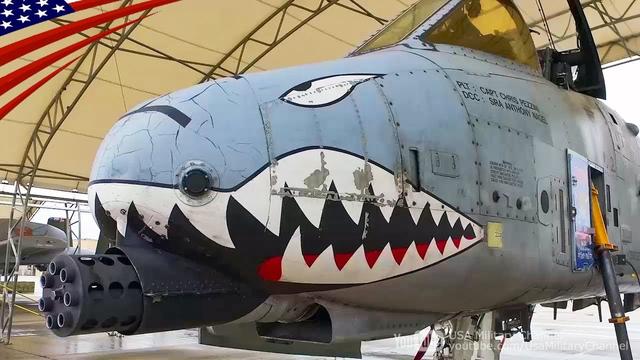Reasons why "shark teeth" are drawn on the US Air Force attack aircraft A-10 (BUSINESS INSIDER JAPAN) --Yahoo! News
delivery
150 comments 150A-10 Thunderbolt II attack aircraft with shark tooth nose art. At Kandahar Airfield in Afghanistan.

The A-10 Thunderbolt II is a close air support aircraft known for its powerful Avenger cannon. [See all images] The reason why "shark teeth" are drawn on the US Air Force attack aircraft A-10 However, this aircraft is also famous for its ferocious nose art, especially shark teeth. is. The A-10 pilot told Insider about the history of shark teeth being depicted as a battle art. Some A-10 Thunderbolt IIs are normal, while others are called "the coolest A-10s" by a US Air Force gruppenkommand. He says it's a rogue shark tooth combat art. "Not every A-10 has shark teeth on it. It's only for the 23rd Wing at Moody Air Force Base in Georgia," said a former A-10 pilot in the 74th Combat Flight. Lieutenant Colonel Matthew Shelly, commander of the corps, told Insider. Only the 74th and 75th Squadrons of the 23rd Wing of Moody Air Force Base, and now the 76th Squadron, which belongs to the Reserve Army, are flying with shark teeth. "There are other A-10 units with nose art, but they are not shark faces." For example, the Reserve Army at Whiteman Air Force Base in Missouri, the 442nd Fighter Wing, aircraft maintenance in 2015. The technician suggested, "Why doesn't our aircraft have fangs?", Which led to the drawing of desert warthog fangs on the A-10. The iconic shark tooth nose art is unique to the 74th, 75th, and 76th Combat Air Corps of the 23rd Wing, which follows the "Flying Tigers" tradition.
P-40 and Flying Tigers
World War II was the golden age of military aircraft art. The design motifs ranged from teeth to pin-up girls to cartoon characters. The air intake of the Curtiss P-40, a ground attack aircraft of the Allied Forces, had a shape suitable for drawing the mouth of a shark. The first nose art of shark teeth was the Royal Air Force's P-40 Tomahawk. This design was later adopted by the American P-40 Warhawk. Shark art in the United States "started with the American Volunteer Group, which eventually became the 23rd Air Corps," says Shelley. The American volunteer army, commanded by Claire Chennault, is better known by the nickname "Flying Tigers." As a combat force against Japan in China, the militias, which began operations before the United States entered World War II, participated in the battle shortly after the United States declared war on Japan. The militias were organized into the Chinese Air Force and operated under the banner of the Republic of China. It broke up after just a year of activity, but according to the US Air Force, it shot down 297 aircraft during that period. They became a legend because of their success. "It was with the P-40," says Sherry. "If you look at the pictures of the P-40 of World War II, almost all of them have shark teeth."
Ryan Pickrell
Last updated: BUSINESS INSIDER JAPAN







